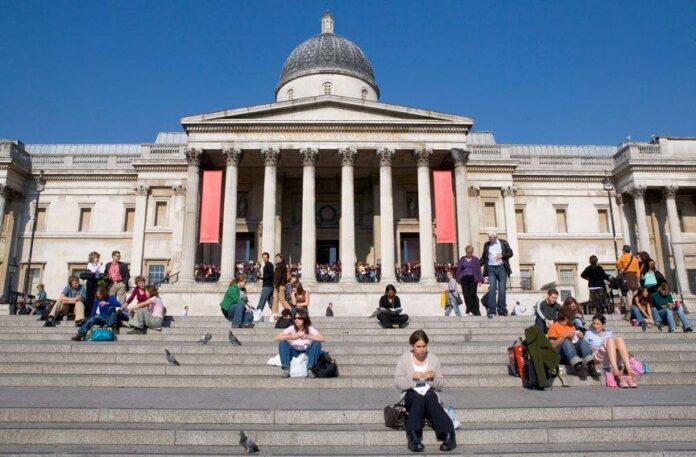The National Gallery in London is half what it was. I mean, literally, half. When I visited recently, fewer than half the rooms normally available for display of the permanent collection were open. The closure of the Sainsbury Wing ahead of a £35m refurbishment has meant moving works normally displayed there into the main building, as well as carving out space for temporary exhibitions.
Less space means fewer works on display. Only three of the gallery’s seven Van Goghs are on show. The same can be said for other big names: four of eight Botticellis, five of 12 Claudes, four of 11 Veroneses, one of four Tintorettos; one of six Lawrences. No Lievens. No Bellotto. Most surprising of all, no Leonardo da Vinci cartoon.
Gone also are half the visitors. Last summer, attendance was 53% down on the summer of 2019, before Covid. It’s true that museums across the UK are still seeing significantly fewer visitors than pre-pandemic. But among major museums, the National Gallery seems to be an outlier. The British Museum over the same period was down 32%, Tate 35%. In Europe, the Prado in Madrid was 28% down, but is feeling bullish about a return to normality, as is the Louvre in Paris, 19% down on its 2019 figures.
What’s gone wrong? There must be many reasons, not all in the National Gallery’s control. But there’s no disguising the fact that it’s a less pleasant place to visit than it was, thanks to the forthcoming redevelopment. Getting into the gallery is an effort, for only one of the usual three entrances is open for regular visitors. Once in, getting around is an effort too. Jan van Eyck’s Arnolfini Marriage, one of the most popular paintings in the world, has been moved to one of the gallery’s smallest rooms, and hangs beside a door to a construction site. It’s dark and crowded.
The Sainsbury Wing is due to reopen in 2024. Will this year of disruption be worth it for a slightly altered front door? I’m far from convinced that making the Sainsbury Wing entrance the main entrance is right. I shall miss climbing up the stairs from Trafalgar Square into the original portico entrance, through into the Great Hall and the great sweep of galleries beyond, which gave that delightful experience of a great decompression from the outside world, like taking off a heavy backpack.
For me, the biggest sadness is that the gallery missed an opportunity to share its treasures more widely across the UK. After Covid, it could have been a great boon to regional museums hoping to reconnect with their audiences. Instead, 52 of the masterpieces displaced by the building works have gone on display in Shanghai, where they’ll be earning the gallery an income.
The gallery says it needs the money to be as self-financing as possible. I asked how much revenue was being generated by renting out these publicly owned works, but was told that was confidential. Every now and then, I like to keep an eye on the gallery’s various reserves; the most recent available accounts show total funds, across the National Gallery Trust and the American Friends of the National Gallery, of about £337m. Do they really need the money?
Hopefully our favourite pictures will soon be back in their usual places. In the meantime, let’s hope the unfortunate state of the galleries doesn’t have any long-term effect on the visiting enthusiasm of its audience. Don’t be put off by my complaints. It may be half what it was—but what a half.

























